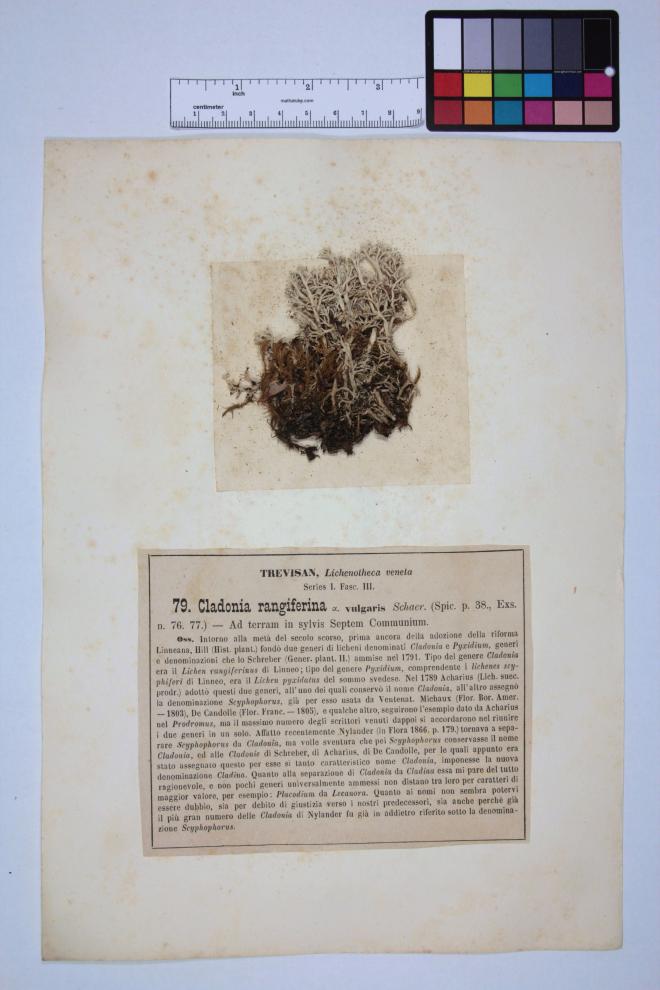Vittore Benedetto Antonio Trevisan, Earl of Saint-Léon (Padua, 1818 – Milan, 1897), was a botanist and professor of natural history at the University of Padua. In 1869, he published the Lichenotheca Veneta, a collection of exsiccatae (dried botanical specimens), which remains one of the most significant collections of lichens in Italy.

Trevisan’s Lichenotheca Veneta comprises 268 specimens: a copy was likely donated by the author to the Istituto Veneto di Scienze, Lettere ed Arti around 1877 and later became part of the Museum of Natural History ‘Giancarlo Ligabue’ collection in Venice in 1923.
Between 2020 and 2023, the Lichenotheca Veneta underwent a meticulous digitization process. Panoramic digital images of the entire herbarium sheets were captured, and the typewritten labels were OCR-processed, allowing the extraction of metadata from the specimens. Both the data and images were then stored in a relational database. This digitization effort is part of the Museum of Natural History of Venice initiative to digitize its collections, in collaboration with the Project Dryades of the Department of Life Sciences at the University of Trieste. The entire process is thoroughly documented in Martellos et al., 2024. As evidenced by the venue where this remarkable research was published, Trevisan’s collection—once intended for scientific purposes—has, in the 150 years since its publication, become a valuable Heritage worth preserving and displaying in a museum.

Bibliography#
Martellos, S., Zardini, M., Seggi, L., Conti, M., & Trabucco, R. (2024). Digitization of the Lichenotheca Veneta by Vittore Trevisan. Heritage, 7(12), 7298-7308. https://doi.org/10.3390/heritage7120337
Cite as:
Scarpa, E. (2025). Provenance and Provenience. Zenodo. https://doi.org/10.5281/zenodo.15167974
